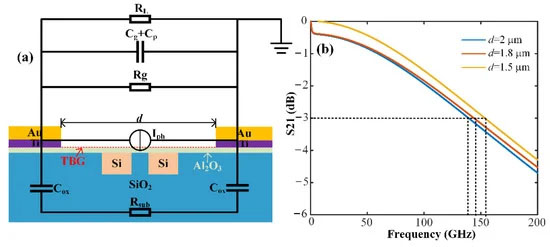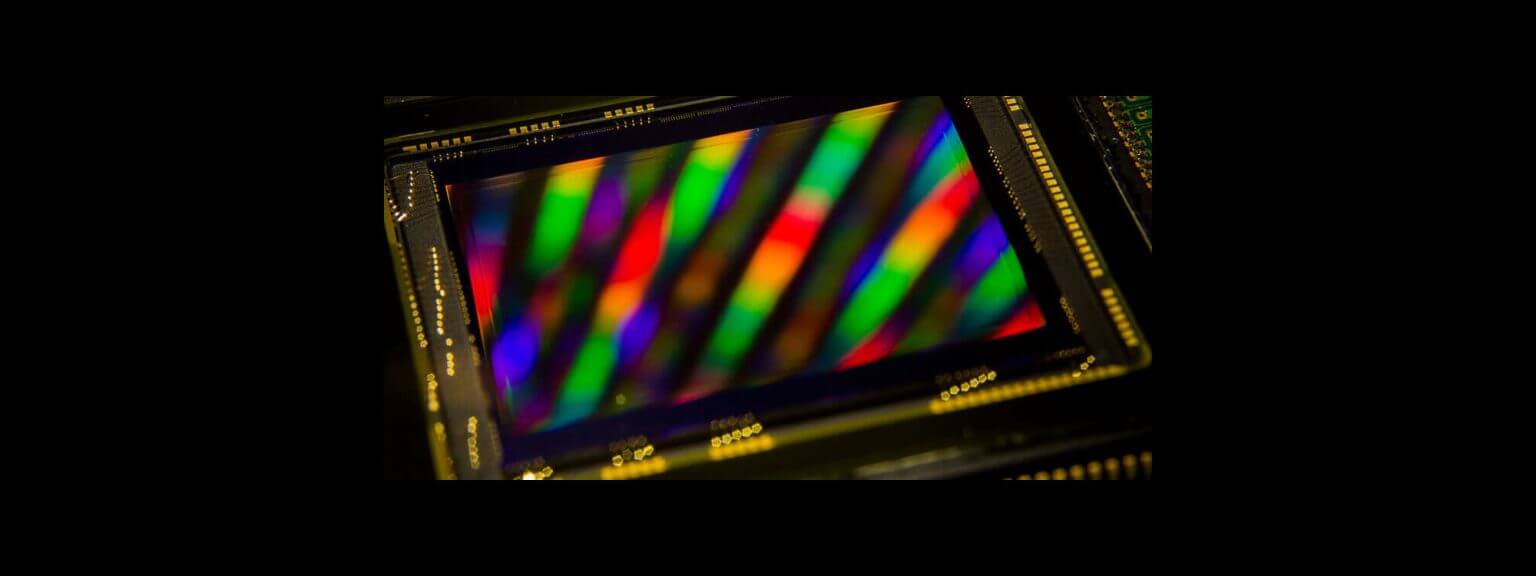On December 13th, Canon will have a presentation at IEDM (International Electron Devices Meeting) on a new sensor that they have developed. Image-sensors-world first discovered this snippet;
Canon will introduce a new twisted photodiode CIS structure – 6 µm pixel pitch – enabling all-directional autofocus for high speed and accuracy and 95 dB DR.
Twisted photodiodes seemed to be photodiodes with a bilayer graphene/silicon hybrid waveguide. The idea is that it makes the photodiodes more efficient and also it has an insanely fast response time. It seems a lot of work around these is for fiber optic communications, but Canon is taking it into the image sensor world.
Here's a rough diagram of a twisted bilayer graphene photodiode. The graphene layer (TBG – Twisted Bilayer Graphene) is the dotted red line. and Si is silicone and AI2O3 is aluminum oxide. Au is aluminum for the conductive wiring. Canon and Sony (and others) now use copper instead. You can see from the diagram that the graphene layer is placed on top of the etched surface of the photodiode.

I suspect this sensor described by Canon is a quad-pixel array. My reasoning is that a quad-pixel array is less efficient using standard means of production, and thus Canon had to get clever to maintain dynamic range. Also, 6um would imply that Canon is showing off a 24MP full-frame sensor. Canon claims up to 95db of dynamic range, which assuming little noise would be around 32EV dynamic range. It depends though if that's time-sliced for video or stills-based. Since they mention db, I'm going to assume there's some video trickery happening there.
The entire session in which Canon is speaking at IDEIM is as follows;
This session includes 6 papers describing the most recent advances in the field of Image Sensors. The first paper by Lee from Samsung Electronics describes a 0.5 µm pixel, 3 layers-stacked, CMOS Image Sensor (CIS) with in-pixel Cu-Cu bonding technology featuring improved conversion gain and noise. The two next papers present new achievements in the area of Voltage Domain Global Shutter (VDGS) CIS. In the second paper, Gao from Omnivision presents a 2.2 µm – 2 layer stacked High Dynamic Range VDGS CIS with 1×2 shared structure offering Dual Conversion Gain and achieving low FPN. In the third paper, Malinge from STMicroelectronics presents a 2.16 µm 6T BSI VDGS CIS using Deep Trench Capacitors and achieving 90 dB Dynamic range (DR) using spatially-split exposure. In the fourth paper, Berkovich from Meta presents a 2 Megapixel – 4.23 µm pixel pitch – offering block-parallel A/D architecture and featuring programmable sparse-capture with a fine grain gating scheme for power saving. The next paper, by Shirahige from Canon, introduces a new Twisted Photodiode CIS structure – 6 µm pixel pitch – enabling all-directional autofocus for high speed and accuracy and 95 dB DR. Finally Shan, from Shanghai Jiao Tong University, presents a 64×64 pixels organic imager prototype based on a novel hole transporting layer (HTL)-free structure achieving highest record low light performances.
Sounds like a party.
I haven't seen any patents on this, but something like this to be quite frank, is easy to miss.
Now for some speculation:
There is some practicality to creating sensors that have extreme efficiency and that is for global shutter. A global shutter sensor takes at least 1 EV hit on dynamic range because it has to have room to store the photodiode charge. That room required is around the same size as the photodiode area. If you make the photodiode smaller, you have less dynamic range. Even more complex is a quad photodiode arrangement, you have to have four charge storage areas for each pixel. Life gets complicated quickly.
Having a super efficient sensor then, still allows Canon to develop global shutter sensors with an extremely high dynamic range. Assuming Canon can place the graphene layer on the sensor economically; we may see actual sensors using this technology in cameras at some later date.
That's literally all I have for you, we'll know more on December 13th or sooner if Canon publishes the information early.


You write “Au is aluminum for the conductive wiring”. Are you sure that this is aluminum and not gold? Au is the symbol for gold in the periodic table.
I am pretty sure that Au isn't aluminum, it is Aurum, Gold in the periodic table. Because aluminum ist not a electronic cunductor, gold on the other hand is one. It would be great, if you could correct that!
The speed at which Sony churns out cameras and having a bunch of image sensors to choose from does put Sony at somewhat of an advantage.
Sony can burn money and makes little margin from CMOS of their own cameras as their competitors are buying inferior CMOS from them at sizable income. And smartphone CMOS makes more money than dedicated cameras because of the sheer volume.
Canon on the other hand is just cameras and medical equipment. If Canon steps into the smartphone market by supplying smartphone manufacturers...maybe Canon can do what Sony does. burn money to grab the market share.
It is great tech so I hope it works out.
Sorry to correct you, but both Gold (Aurum, Au) and Aluminum (Al) are electrical cunductors.
The Electrical Resistivity ρ (Rho) is as follows:
Au: 2,44 x 10−8 Ω·m, makes Gold the third-best electrical cunductor*
Al: 2,65 x 10−8 Ω·m, makes Aluminum the fourth-best electrical cunductor*
Silver (Argentum, Ag) is the best* and Copper (Cu) the second-best*, by the way.
*referring to standard metals at room temperature
Bad news already that the supposed R1 won't have quad pixel AF. If they do not come out with global shutter or at least a stacked sensor so fast that it can compete with Sony, then Canon will really start to heavily cede the pro sports marketshare.
Credit given when it's due, the A9 III really seems like a game changer.
At this point, I'd be willing to put down a few buck that there may be an unexpected R3 II release in 2024....coinciding with the R1 being pushed back for release for a year or so more....
TL;DR: